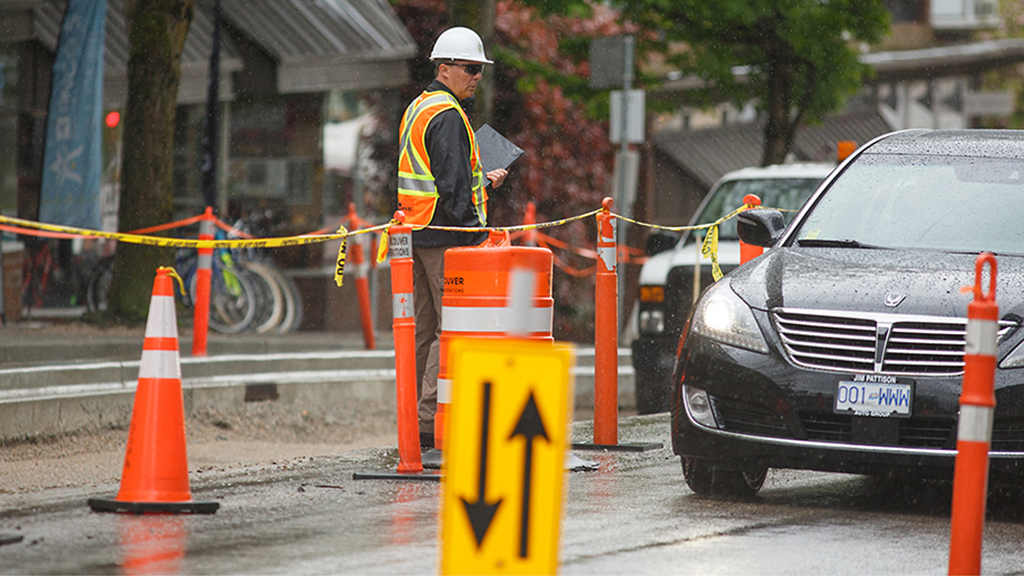A thorough orientation that includes work zone safety is a powerful tool for companies employing people who work at or on the roadside.
Safe work zones are a regulatory requirement in B.C. and play a critical role in preventing worker injuries caused by moving vehicles. They can also help improve productivity by creating a more organized and efficient work environment.
Employers have a legal requirement to provide safety orientation for all workers. Whether your crew is on a busy street or a quiet neighbourhood road, they’re in a work zone. They need to know how to set up safely and protect themselves from moving vehicles.
Here are some tips you should use during orientation, from Road Safety at Work.
Train crews to be prepared
Before leaving for the worksite, crews should:
- Ensure the vehicle is equipped with all safety equipment, including wheel chocks, fire extinguisher and first aid supplies
- Plan for changing conditions like rain, glare or low light that can make it harder for drivers to see them
- Know your first aid procedures
Train crews in risk assessment
Before getting out of the vehicle, crews need to identify the site-specific hazards, assess the risks and take steps to reduce the risks.
They should:
- Pre-plan their work to determine the equipment needed and if traffic control is required
- Identify hazards such as traffic, pedestrians and tight spaces
- Assess how well passing drivers can see them, especially near blind corners, steep slopes and from a distance
- Wear high-visibility personal protective equipment
- Determine proper placement of cones to guide traffic and prevent it from entering the work zone
- Ensure there are clear sightlines and buffer zones, signs or spotters to warn others
- Make sure spotters are positioned safely, can communicate clearly with the crew, and that all communication signals are reviewed before work begins.
Train crews in your safety procedures
Make sure everyone knows your company’s rules for working around traffic. They need to know what “safe” looks like, and what to do when things don’t go as planned. Some things to cover include:
- Where to park (and where not to)
- Properly wearing their PPE
- Who is in charge of cones and signs
- Keeping sightlines clear when unloading or backing up
Do a vehicle, equipment walk-through
Each crew member should know:
- Where safety equipment (cones, flashers, PPE) is stored and how to use it
- How to check visibility using mirrors and cameras
Have crews demonstrate your procedures to confirm their understanding.
Provide practical or competency-based training
Practice using real-world scenarios. These could include:
- Backing into tight residential driveways
- Setting up a work zone along a narrow curb
Workers must be instructed to always face oncoming traffic, stay alert to their surroundings and to ensure the safety of themselves and their co-workers.
Keep a record of orientation
Maintain records for each worker, including completed education and training, orientation records, and a copy of their driver’s licence and record if they drive on the job. The paperwork is part of your due diligence.
Provide regular refreshers
Reinforce safe practices with regular conversations, tailgate talks and spot checks. Provide training whenever drivers switch vehicles, return after a long absence or when you update company procedures.
Visit RoadSafetyAtWork.ca for more work zone safety resources.



Recent Comments
comments for this post are closed